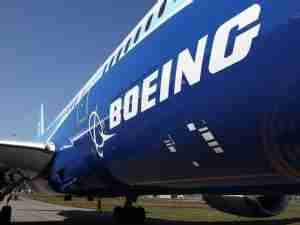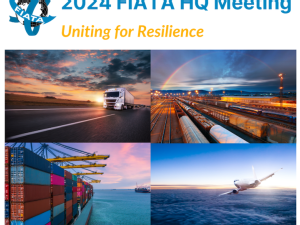Long-suffering Cathay Pacific Airways Ltd. shareholders got some overdue good news with annual results Wednesday: A surge back to profit in the second half.
There’s a cloud on the horizon, though, in the form of President Donald Trump’s escalating war on Chinese exports.
One way of thinking about Cathay Pacific is as two airlines. The visible carrier, which ferries everyone in the passenger cabin (and their luggage) around the world, accounts for not much more than half of total capacity. Beneath their feet and on a fleet of 22 less snazzy planes, the remainder of capacity constitutes the world’s fourth-largest cargo airline.
That’s the part of the business that staged a dramatic recovery. Cargo traffic climbed 11 percent from a year earlier and yields—the price charged to move a metric ton one kilometer—rose by the same amount, pushing air-freight revenue to its best result since 2014.
That made up for passenger yields that are down 3.3 percent on the year, at levels in line with those of Chinese budget carriers Spring Airlines Co. and Juneyao Airlines Co. a few years back.
The bad news is that cargo tends to be highly cyclical—and with trade tensions rising on the back of a more protectionist turn in the U.S., the areas where Cathay Pacific specializes look particularly at risk.
Electronic parts, mobile phones and computers make up the lion’s share of air exports from Hong Kong. Trump will target those sectors in his next wave of tariffs against China, Reuters reported Tuesday, citing people it didn’t name who had discussed the matter with the administration.
Air cargo has gone through a banner year, but it’s been showing signs of slowing as the world adapts to a post-2016 growth spurt. The industry tends to do best when the global economy starts to accelerate and managers of tightening supply chains turn to air freight to shorten lead times. While traffic rose 7.4 percent from a year earlier in the three months through January, the quarter-on-quarter growth rate of 0.7 percent was the slowest in almost two years, the International Air Transport Association said this week.
Should the cargo improvement continue, new Chief Executive Officer Rupert Hogg will have a wind at his back in attempts to turn Cathay Pacific around by cutting costs and reducing money-losing fuel hedges.
The nasty thing about winds, though, is that they can turn against you in a moment. Trade turbulence is brewing. Investors should fasten their seat belts.
This column does not necessarily reflect the opinion of Bloomberg LP and its owners.











